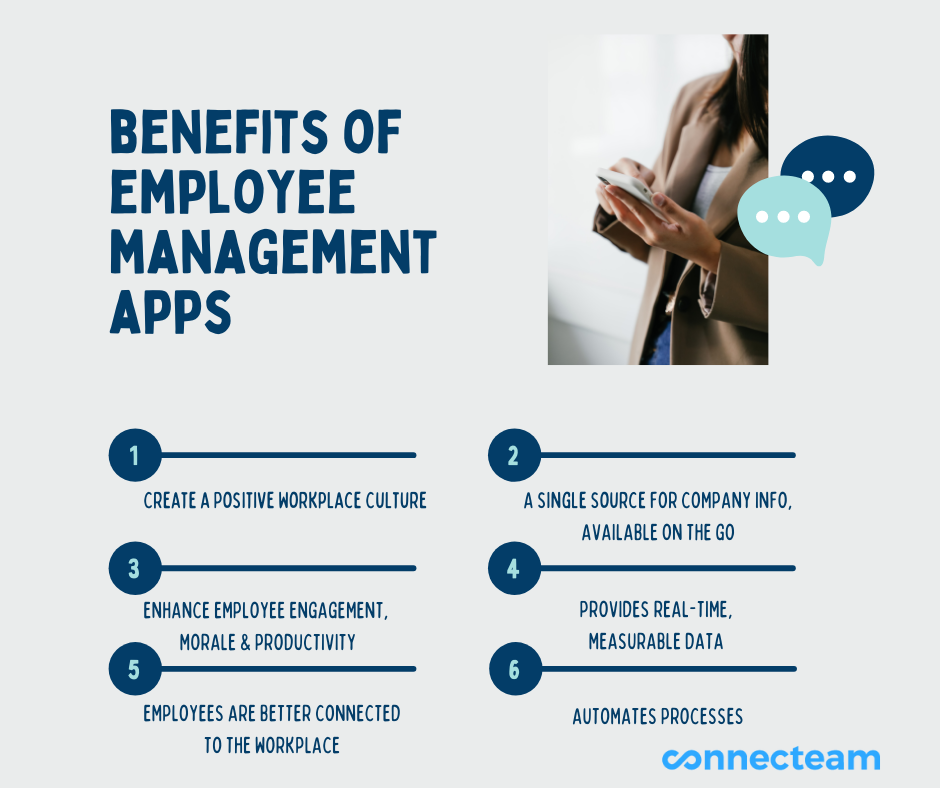Human resources have changed a lot over the years, especially since the onset of the pandemic. We’ve lined up 8 of the latest top HR trends for 2025 to help you stay on top of your game and ensure that you attract and retain top talent easily and effectively.
With 2025 in full swing, it’s up to HR leaders to predict what will essentially shape the future of work in the upcoming year and define priorities accordingly.
Faced with today’s competitive labor market and an increasingly hybrid world of work that calls for more flexibility than ever before, finding your next steps is anything but cut out for you.
To help you on your way, check out our lineup of critical HR trends for 2025 to gain key insights into how you can build essential strategies to attract and retain top talent in this dynamic environment.
-
Flexibility Is the New Normal
-
Understanding a New Generation of Workers
-
The Rising Need for All-In-One Employee Management Apps
- Makes onboarding easy and efficient
- Enhances the employee training experience
- Gives you the ability to quiz employees on their information retention
- Easier to share employee appreciation and recognition
- Quicker and easier for employees to get you needed documentation
- Bridges communication gaps
- More accurate employee time tracking for payroll processing
-
Prioritizing Employee Wellness
-
Finding and Investing in Employee Talent Internally
-
Offering Record Pay Rises
-
Owning the Employer Brand
-
Don’t Neglect the Human Element
While it became a necessity during the pandemic, offering employees hybrid and remote working options is a trend that’s here to stay. In light of this new reality, employers who include a remote working option attract seven times more applicants than those who don’t. As a result, more and more employers will continue to offer workers better flexibility and remote working options, as opposed to the classic 9-5 full-time in-office schedule.
Unleash the Full Potential of Your Business with Connecteam’s All-in-One Management Software
HR departments have to adapt to working with a staff that isn’t physically present most of the time. Screening, interviewing, and onboarding new employees are being done remotely, adding to the challenges.
Of course, human resource professionals are also likely to work remotely or in a hybrid work capacity. This means that managing online portals and cloud-based systems is imperative to how human resources departments function daily. For businesses exploring digital solutions, check out our guide to the best free HR software solutions to simplify and optimize HR tasks.
Slowly but surely, companies in all industries, as well as HR professionals, will need to start adjusting to a new generation joining the workforce. Millennials have been entering the workforce for several years and will continue to make up a larger percentage of the staff at most companies. At the same time, members of Generation Z are graduating from high school or college and entering the workforce.
HR departments will soon discover that these younger workers have a different set of ideas and priorities for their professional careers. For example, younger workers expect to have flexible schedules, even if they’re not working 100% remotely.
The majority of employees in the two younger generations in the workforce also prefer to be in contact with their supervisors and managers regularly. They want feedback on their job performance, and they want to collaborate on projects.
Human resource workers will have to adapt to these preferences and adjust policies to give young employees the flexibility and collaboration they crave. In the meantime though, there is still a multigenerational workforce where the “veterans” and “young bucks” are working side by side. You must understand how to manage both sides of the coin.

There is no doubt that new technologies are shifting workplace dynamics. Especially employee management apps, as they help enhance engagement and productivity, offer transparency, offer real-time data so it’s easier to make informed business decisions, and even improve the employer brand.
The value of implementing employee management apps goes beyond this.
What are the benefits of using an all-in-one employee management app?
Apart from the benefits we listed in the above infographic, the list could go on. For example:
Easily connect with remote and deskless employees
And honestly, the benefits could tumble on. However, not all employee management apps are created equal. If you’re looking for a true all-in-one employee management app that packs all of the above benefits, and then some, you need to give Connecteam a try.
Experience the Power of On-The-Go Employee Management
From daily operations to employee management, Connecteam’s all-in-one employee app makes it easier to run every aspect of your business.
Another consequence of the pandemic is that employee wellness has become even more important.
Most of the time, HR departments will be front and center in implementing new policies concerning wellness. However, the HR trends aren’t just concerning physical illness and stopping the spread of germs and disease.
The pandemic has resulted in high levels of stress, with people worrying about their health, family, and whether the pandemic could put their job at risk. This means HR departments need to create wellness programs and employee assistance programs that focus equally on physical and mental health.
Human resource professionals need to find methods of detecting mental health distress among employees and making sure they have the resources to deal with those issues. At the same time, encouraging employees to engage in fitness, regular exercise, and other good health practices will continue to be important for HR professionals.
One of the more surprising trends in human resources is that more companies are offering more employee training programs and internal advancement opportunities and are promoting from within when looking for talent. This is partially a reaction to a seemingly shrinking talent pool and a consequence of companies trying to retain employees at a higher rate.
As a result, HR departments are starting to incentivize employees to stay with the same company long-term while also identifying employees who will be good fits for more advanced positions in the company.
Of course, this is a new challenge for human resources professionals, who have to use different strategies when looking for suitable candidates internally rather than externally. When looking internally, HR teams need to understand employee potential and goals to see who can be promoted based on future open positions. People analytics can help you identify existing and missing skills and plan to close talent gaps.
This Might Interest You
Take your HR management to the next level! Explore our guide to the best employee database software for 2025 for seamless employee data organization, or discover the best human resource management systems for 2025 to optimize recruitment, payroll, and employee engagement. Find the right tools to power your business today!
Research indicates that around two-thirds of US companies are planning and have budgeted to provide higher pay raises than this year in 2023. While most companies raise 3% on employee salaries, this is expected to be increased to 4.1%. If implemented, this will be a record high since the Great Recession of 2008.
This highlights companies’ awareness that employees’ expectations have risen in direct proportion to the current record-high inflation rate. It also shows that the current labor market and fluctuating economic conditions require businesses to constantly reassess their salary budgets to remain competitive, keep their existing workforce happy, and attract new talent.
A powerful employer brand is vital in attracting and retaining the best talents in today’s highly competitive labor market. Companies with successful employer brands receive 50% more qualified applicants and enjoy reduced hiring costs per candidate. With employees being their audience, it will be the norm for HR teams to own the employer brand and so control their careers site, have a talent community, nourish company culture, and grow their sophisticated attraction strategies by 2023.
Lastly, human resource departments should remember that despite the increase in technology, there is still a human element to what they do. HR professionals still need to be welcoming and empathetic people who encourage employees to come forward with their concerns. These are traits that will never go out of style.
Even with technology being a massive part of HR’s daily functions, there are some things that AI can’t do. There are serious concerns in the workforce regarding physical health, mental health, and high levels of staff turnover. These are very human issues that human resources departments will need to address.
With or without all of the technology at their fingertips, HR departments have huge challenges ahead of them in 2025 and beyond with regard to keeping employees healthy, happy, and productive.
Moving Forward With HR Trends In 2025
HR trends are ever-evolving, and while these eight are hot-ticket items this year and next, there is no doubt in my mind that they will change as the months go by.
Whether you’re an HR professional or the owner of a small business, it’s wise to keep your ear to the ground and adapt your business strategies as needed when new HR trends fire up.
Want to Easily Blend in With the New HR Trends?
The Connecteam app does EVERYTHING and FITS within budgets.




